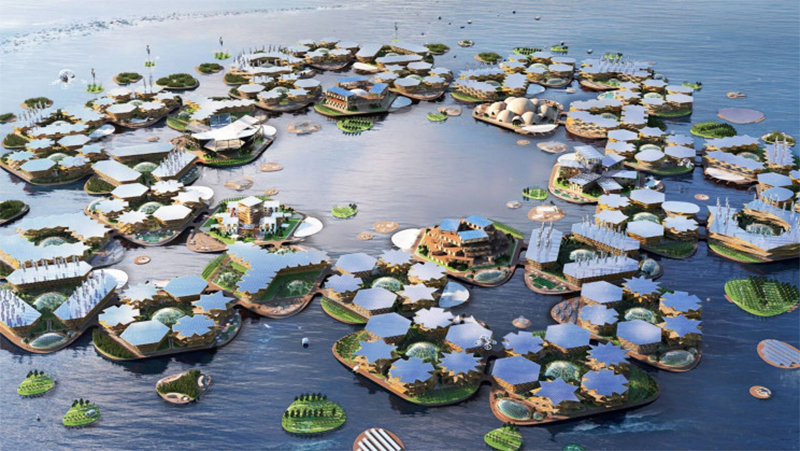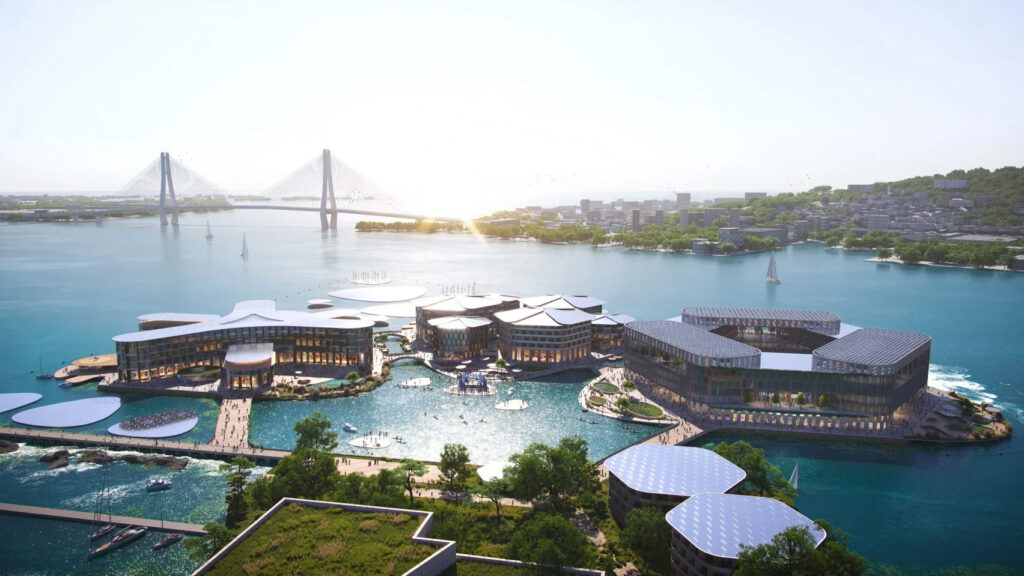South Korea Unveils the First Floating City Prototype in Busan

The rising sea levels present a constant threat to many low-lying coasts and small islands, particularly in the Asia-Pacific region. In response to the danger, UN-Habitat and the Republic of Korea’s Busan Metropolitan City, in cooperation with OCEANIX, a blue tech company, unveiled the design concept for the prototype of a sustainable floating city, which is a first in the world. They presented the concept on April 15, 2022, at the UN Headquarters in New York. The first segment of the project will be ready by 2025.
According to Climate.gov, the information and climate change portal run by the National Oceanic and Atmospheric Administration (NOAA), since 1880, the global sea level has risen by eight to nine inches. However, what is alarming is that one-third of the occurrence was in the last 25 years.
OCEANIX Busan floating city
OCEANIX Busan, the first floating city’s goal, is to provide groundbreaking technology for coastal cities that face climactic threats and severe land shortages. Busan’s floating city will be the prototype sustainable floating city in the world. The project aims to have a flood-proof infrastructure that adapts to the rise of the sea. The city will have sustainable water, energy, and food supply. Busan is South Korea’s largest seaport and the second-most populous city after Seoul. The rising sea level can drastically affect the 3.4 million residents in the coastal city.
Based on the artists’ concepts presented at the UN, the floating city will have six integrated systems—coastal habitat regeneration, innovative mobility, net-zero energy, food, closed-loop water systems, and net-zero waste and circular systems. The interconnected systems linked by bridges will generate all the required operational energy through rooftop and floating solar panels. Greenhouses will take care of growing food.
The initial interconnected neighborhoods will cover 6.3 hectares, accommodating 12,000 people on three platforms. The expanded versions will have more than 20 platforms for 100,000 people and visitors.
Each neighborhood will be mixed-use. However, the neighborhood will have specific purposes. The living platform will have diverse housing options geared towards accessibility, with stores and dining facilities.
The research platform will be a center for maritime study. There will be green economy jobs in dorms, makerspaces, and habitat regeneration centers. The lodging or tourism platform will feature organic dining, eco-lodgings, and various facilities for visitors.

The design
US-based blue tech company OCEANIX designed the concept for Busan’s floating city. The lead architects are BIG-Bjarke Ingels Group and SAMOO (Samsung Group).
According to the project’s designers, they based the design on Busan’s unique location and the city’s mix of the old and new. With the floating city, the area can expand its urban development into the ocean, with floating platforms that are flood-proof, resilient, and sustainable. The design is specific to Busan, emulating the city’s characteristics. Busan is known for nature reserves, beaches, hot springs, and various local and international events. It has four seasons and a temperate climate that is never too cold or too hot. Busan is also known for its deep harbor and gentle tides, making it the fifth-largest container handling port in the world.
The floating city will be at Busan North Port, which provides cargo and passenger handling facilities. It opened in 1978. The first phase of the construction, covering 6.3 hectares, will start in 2023.